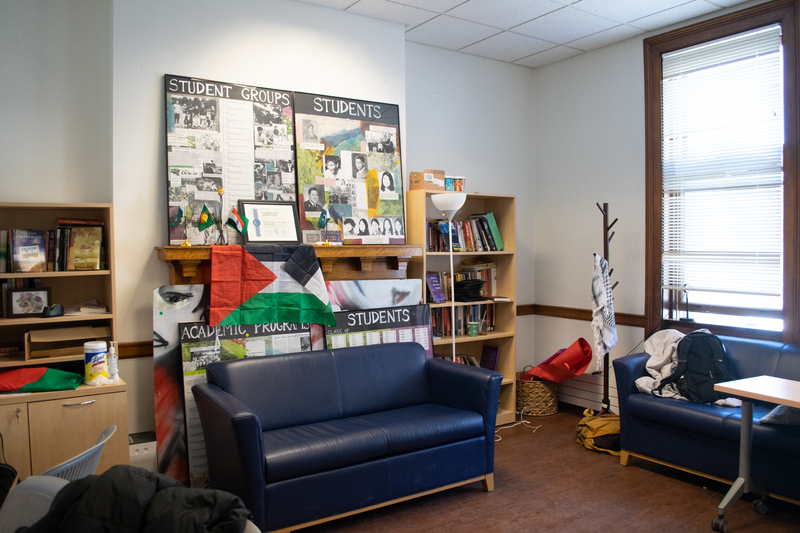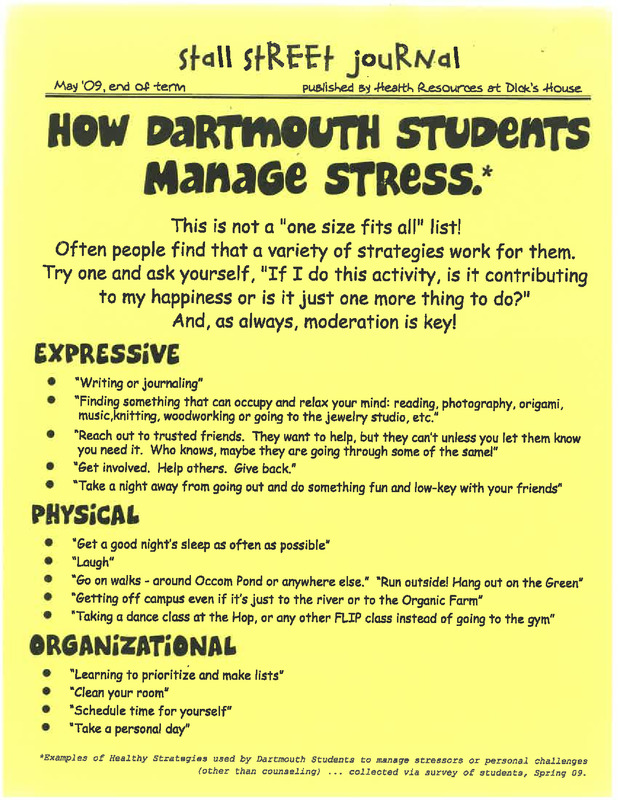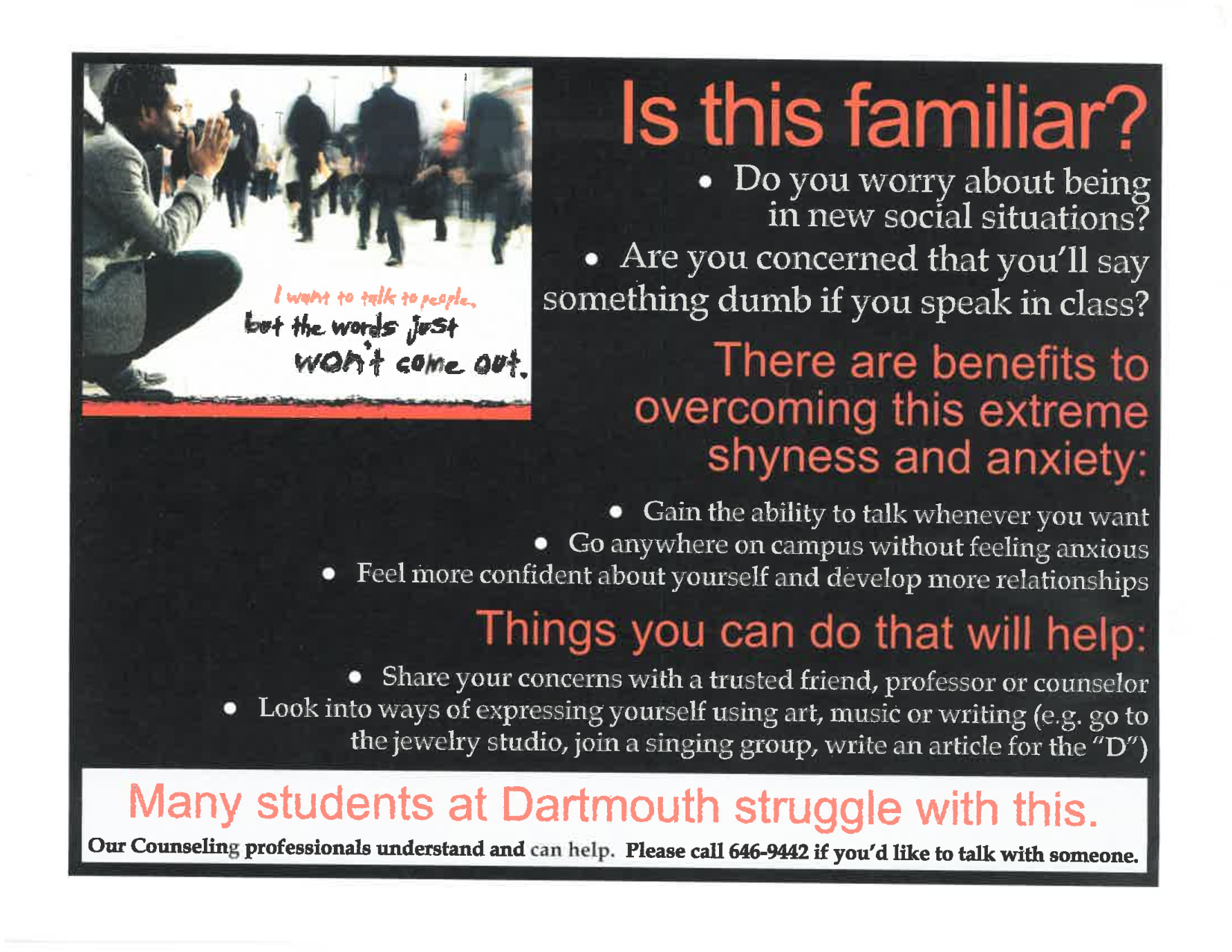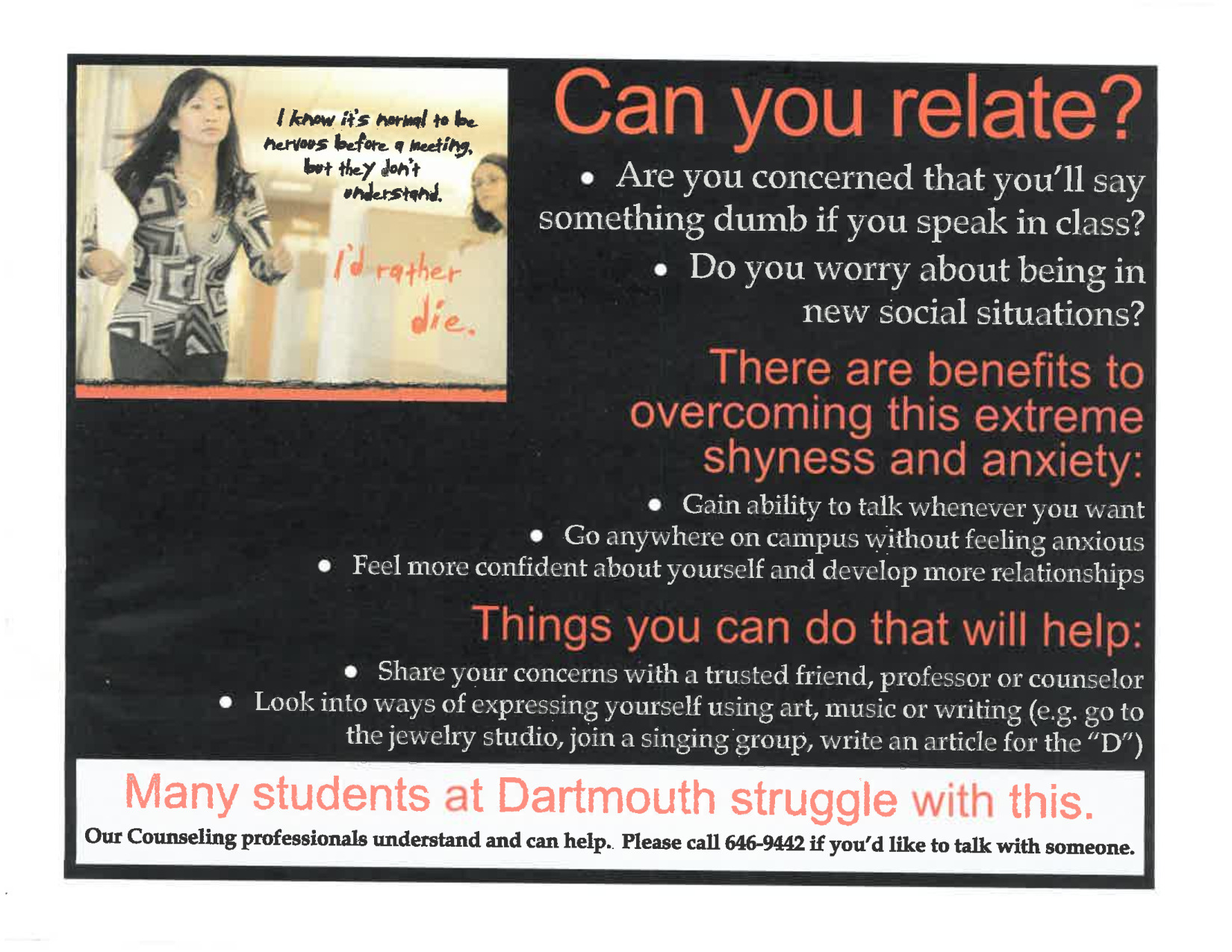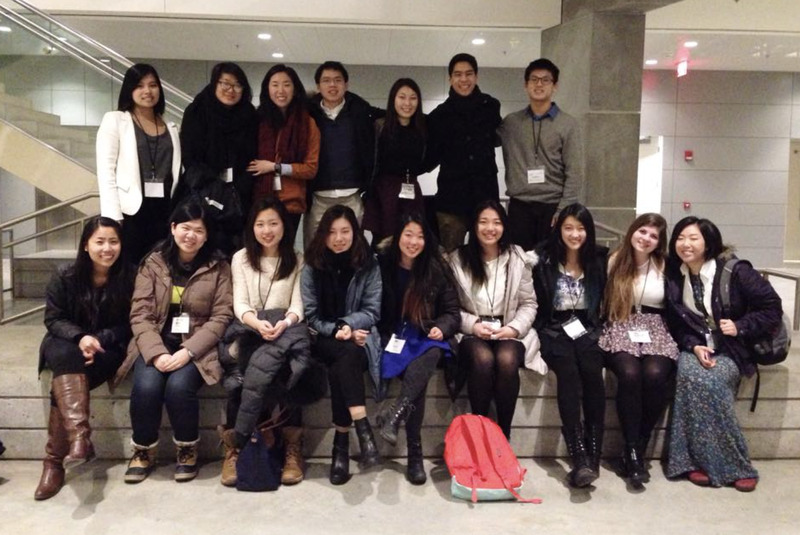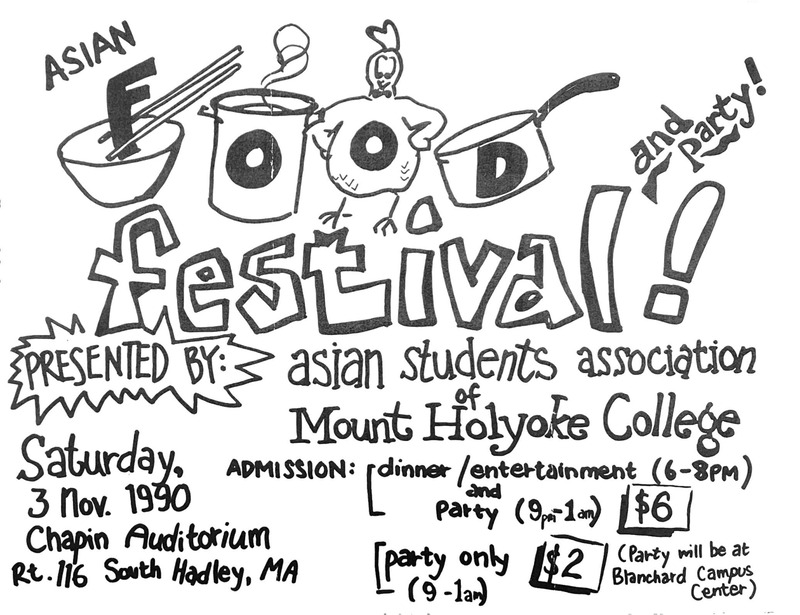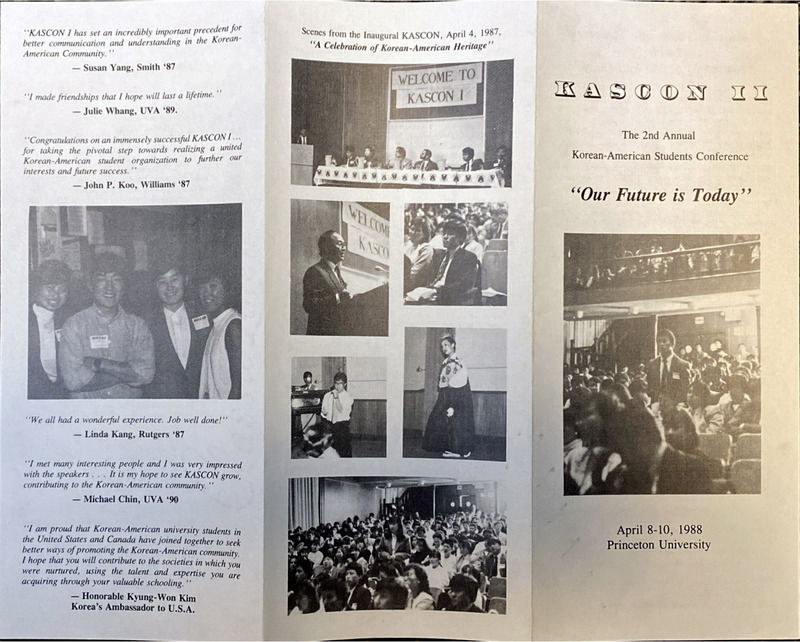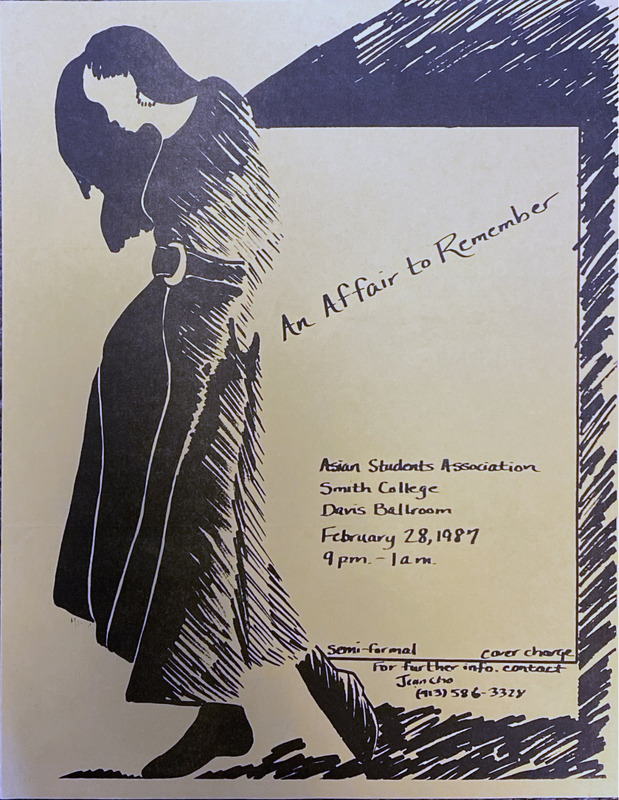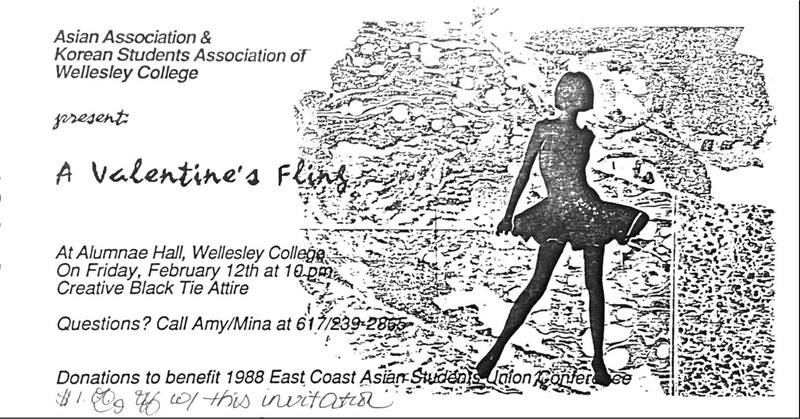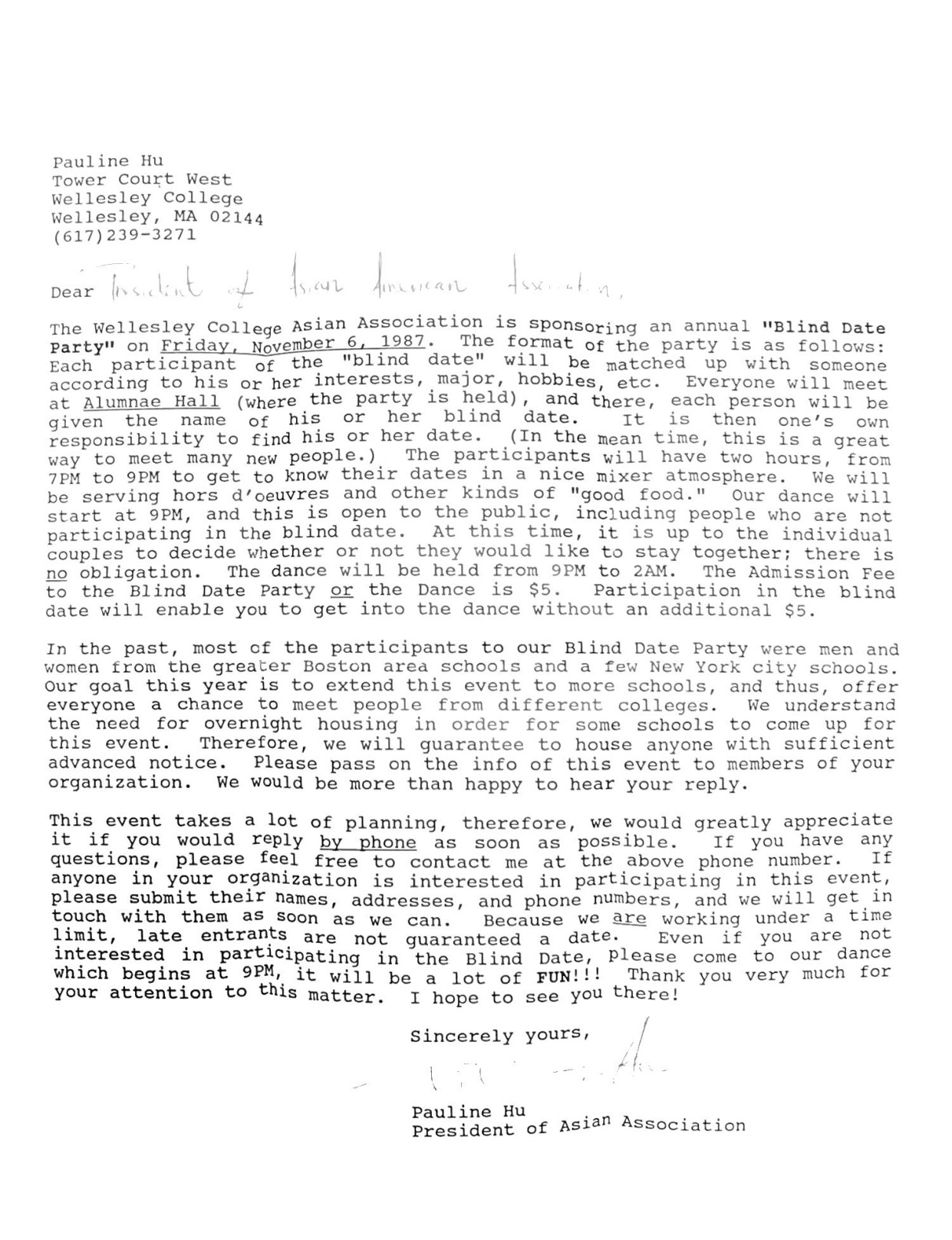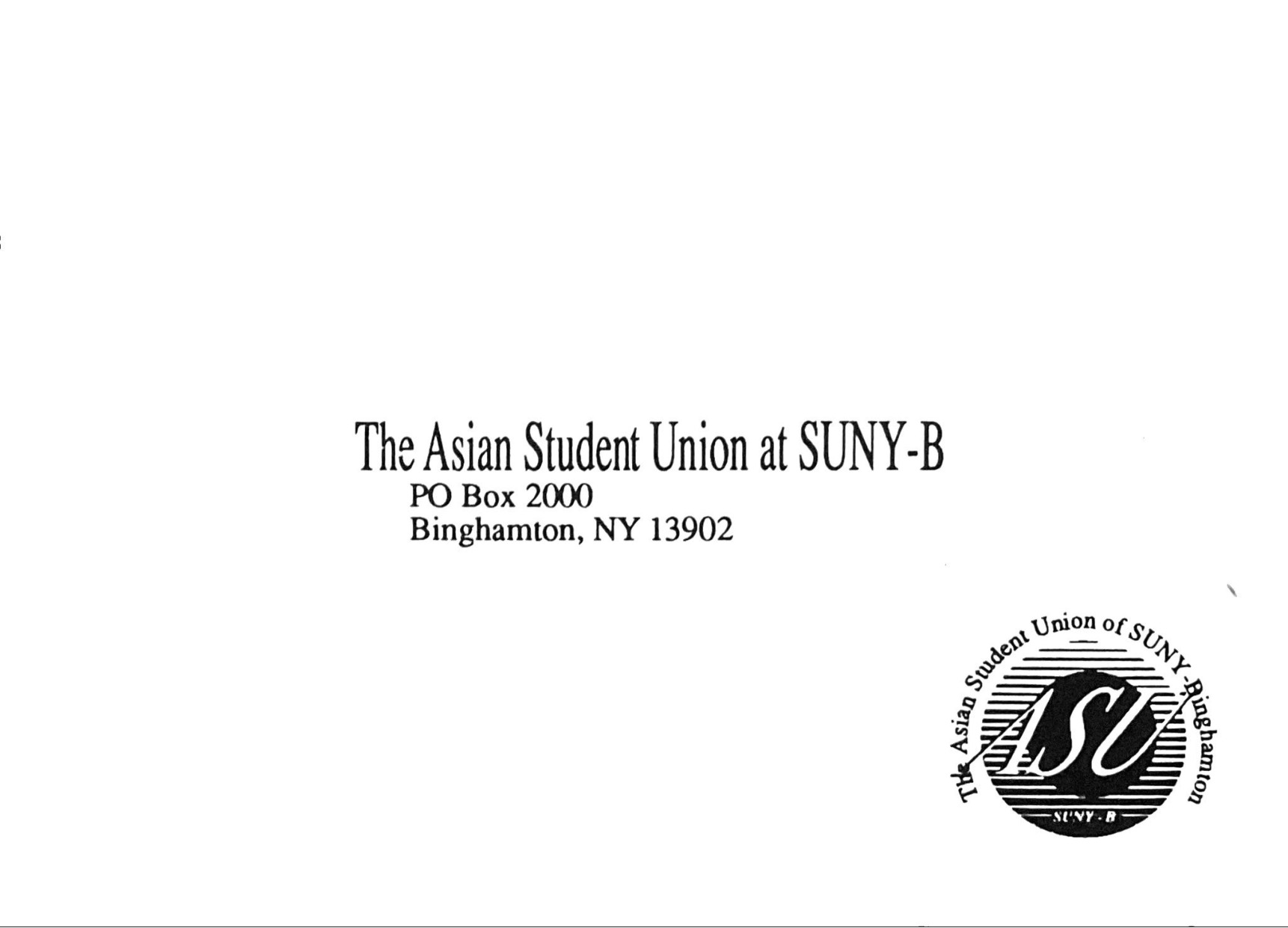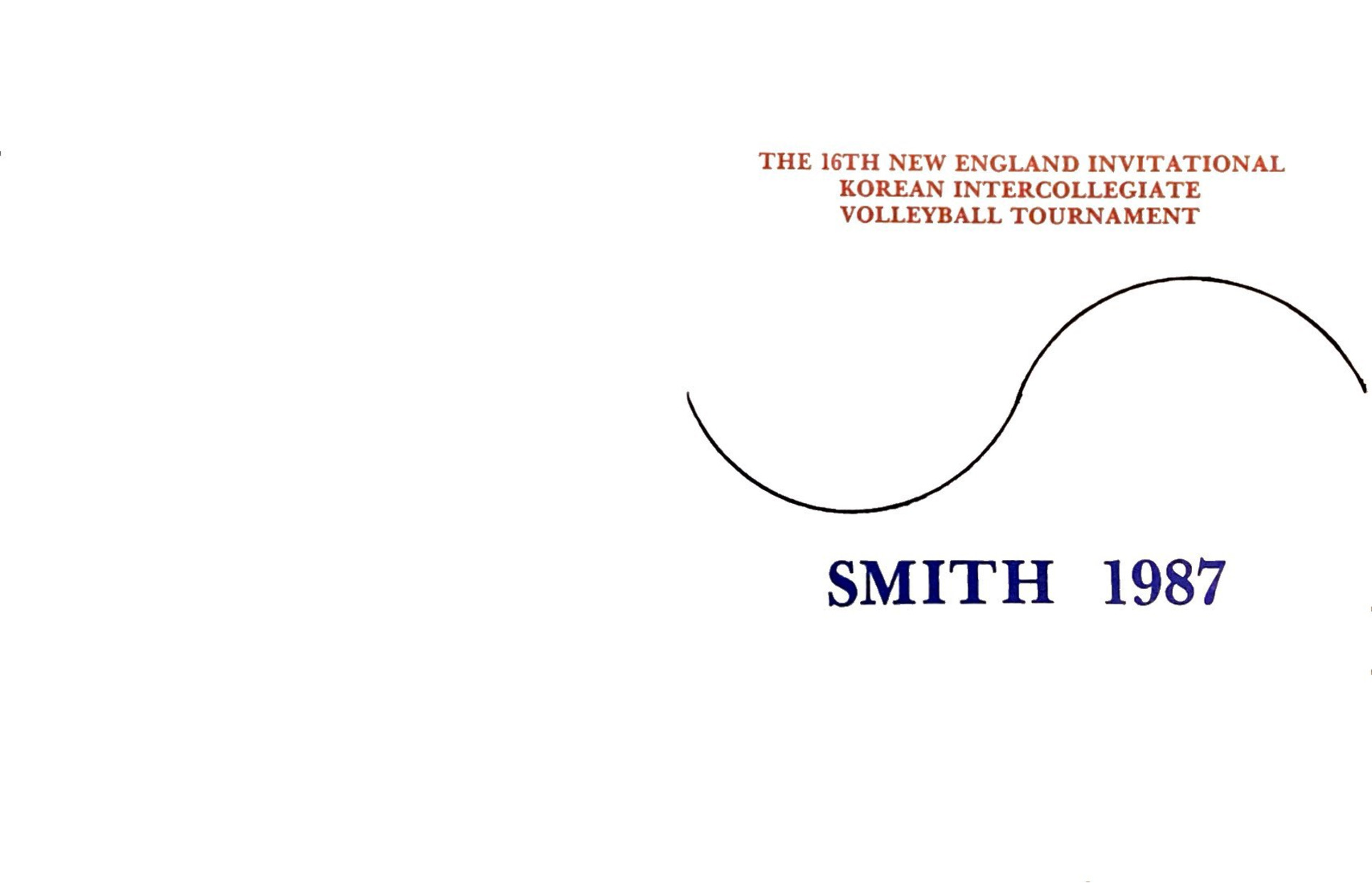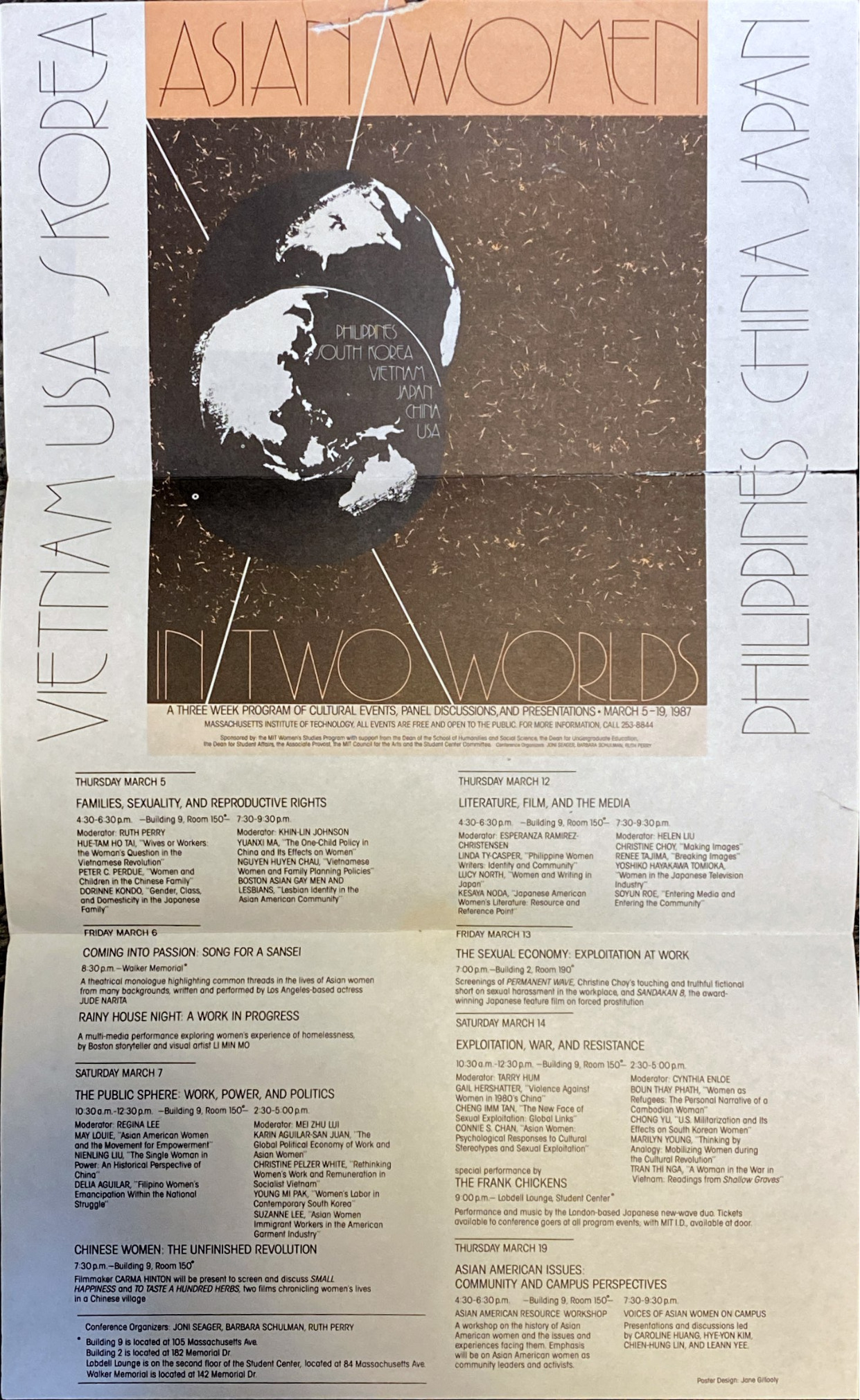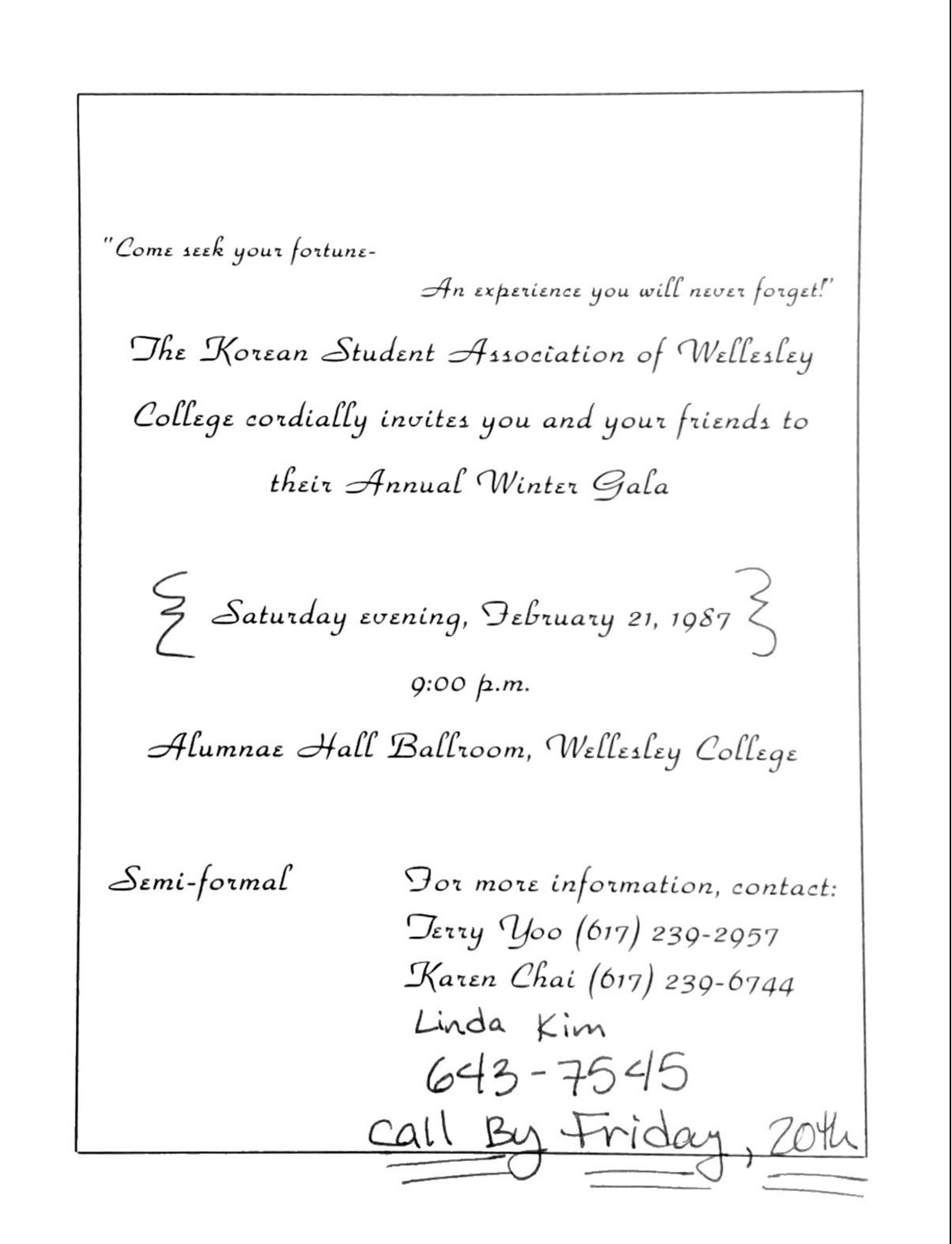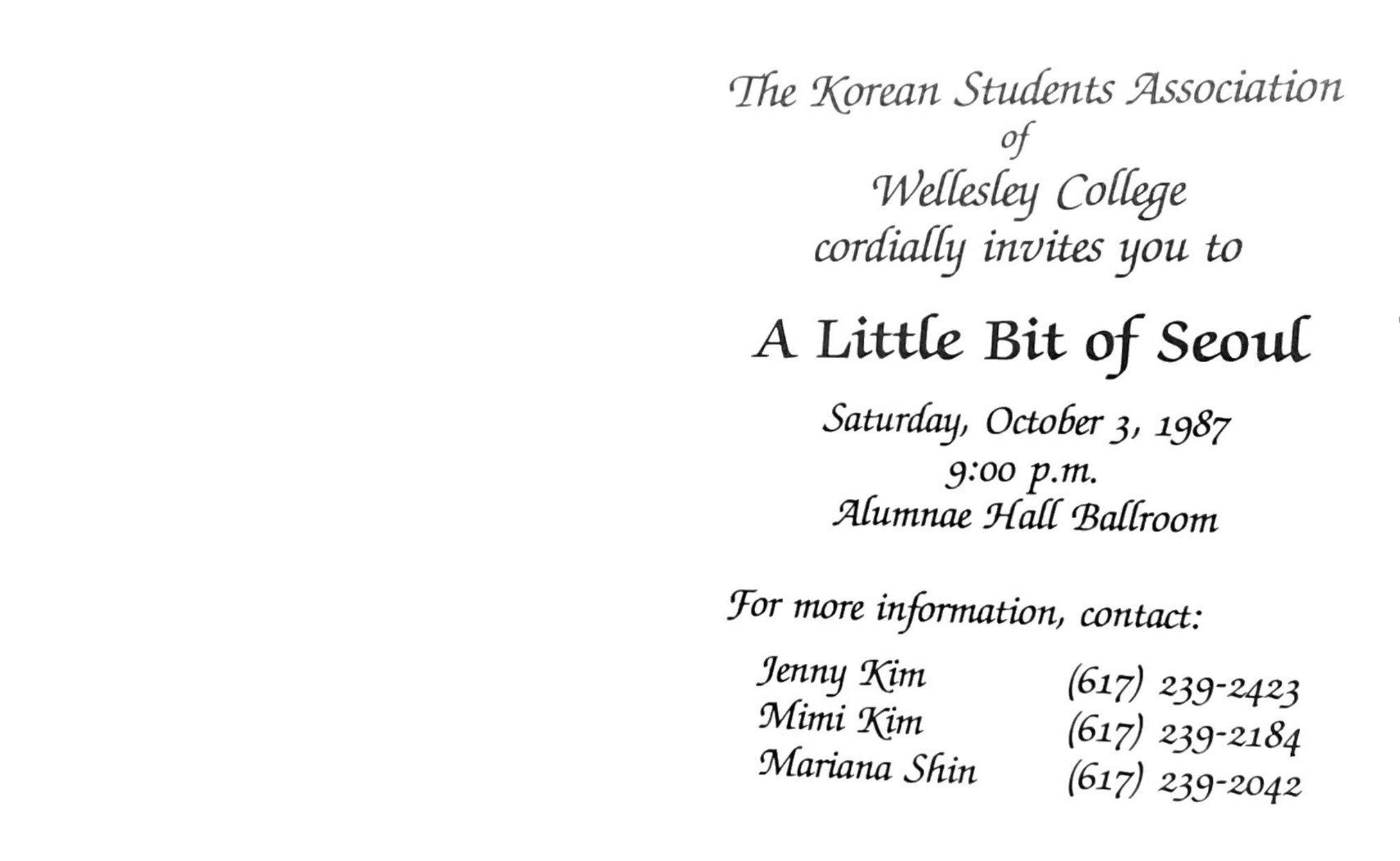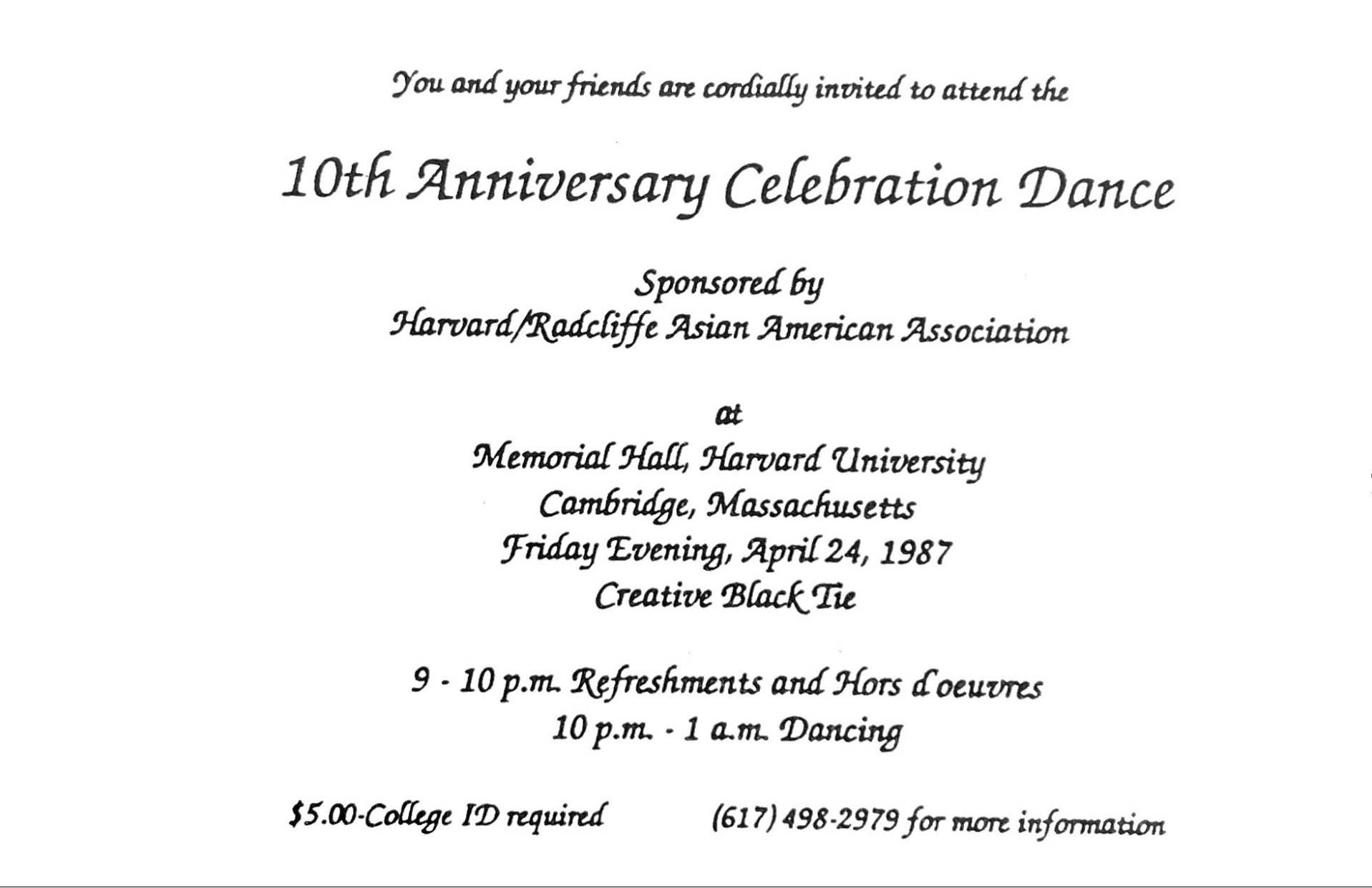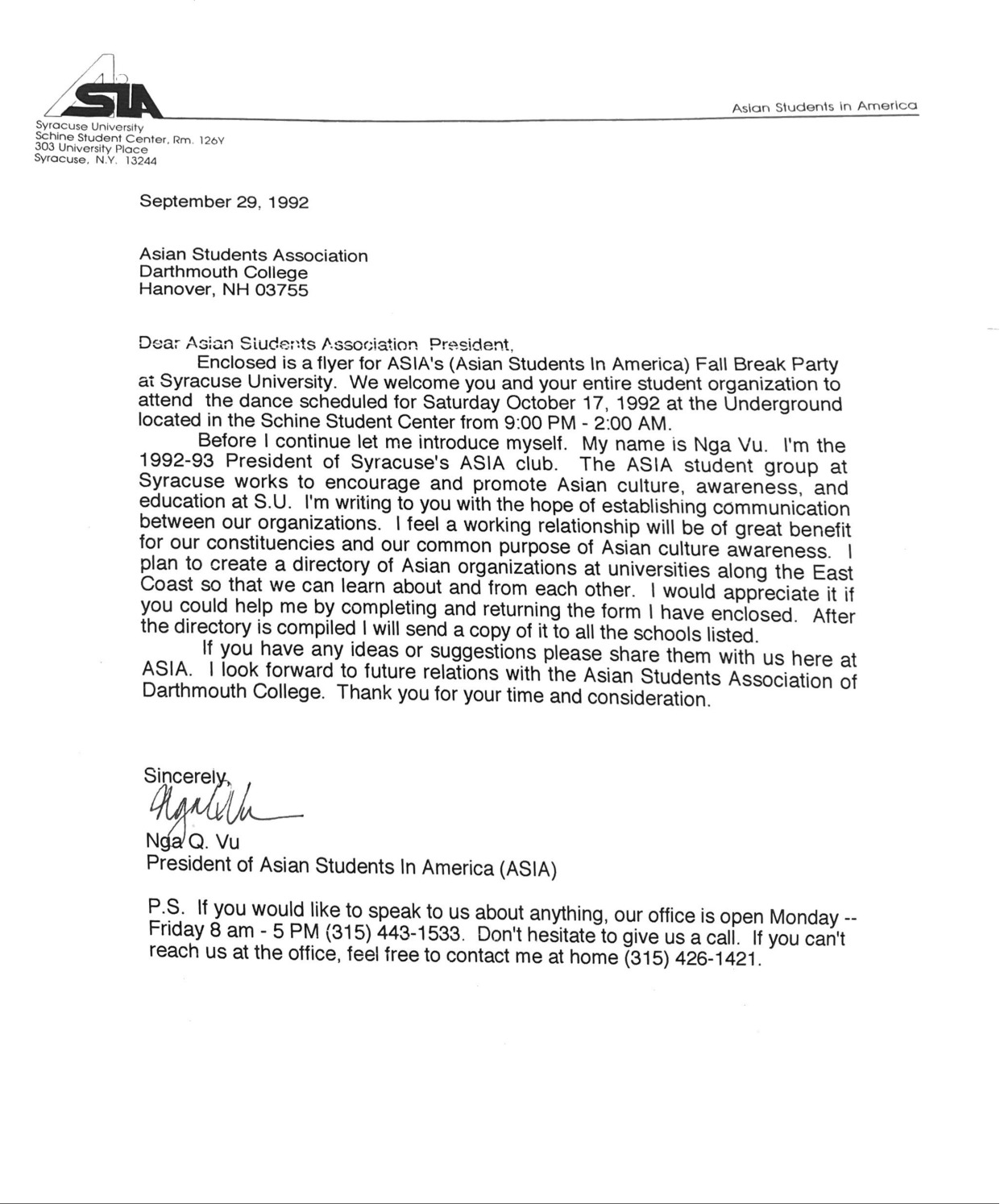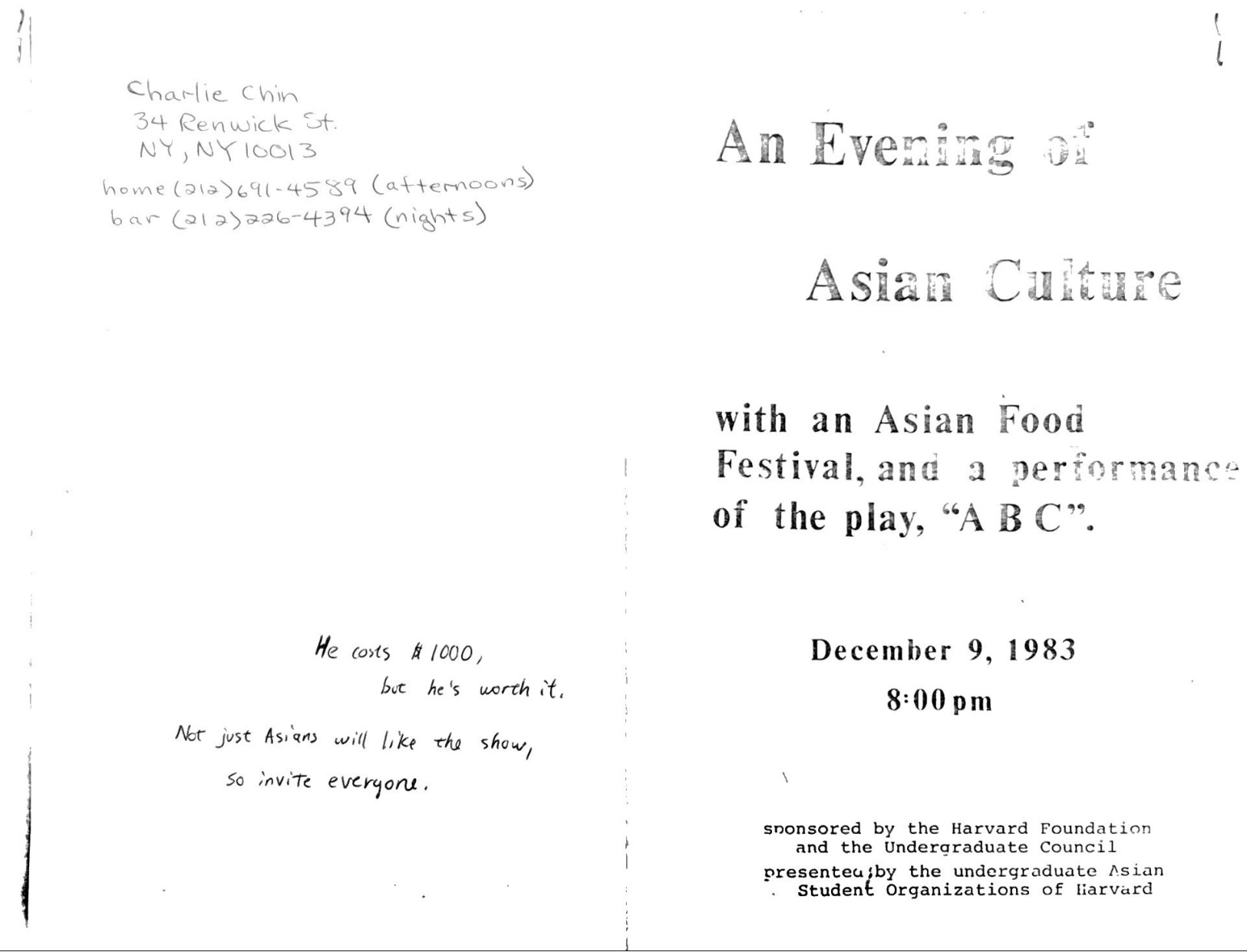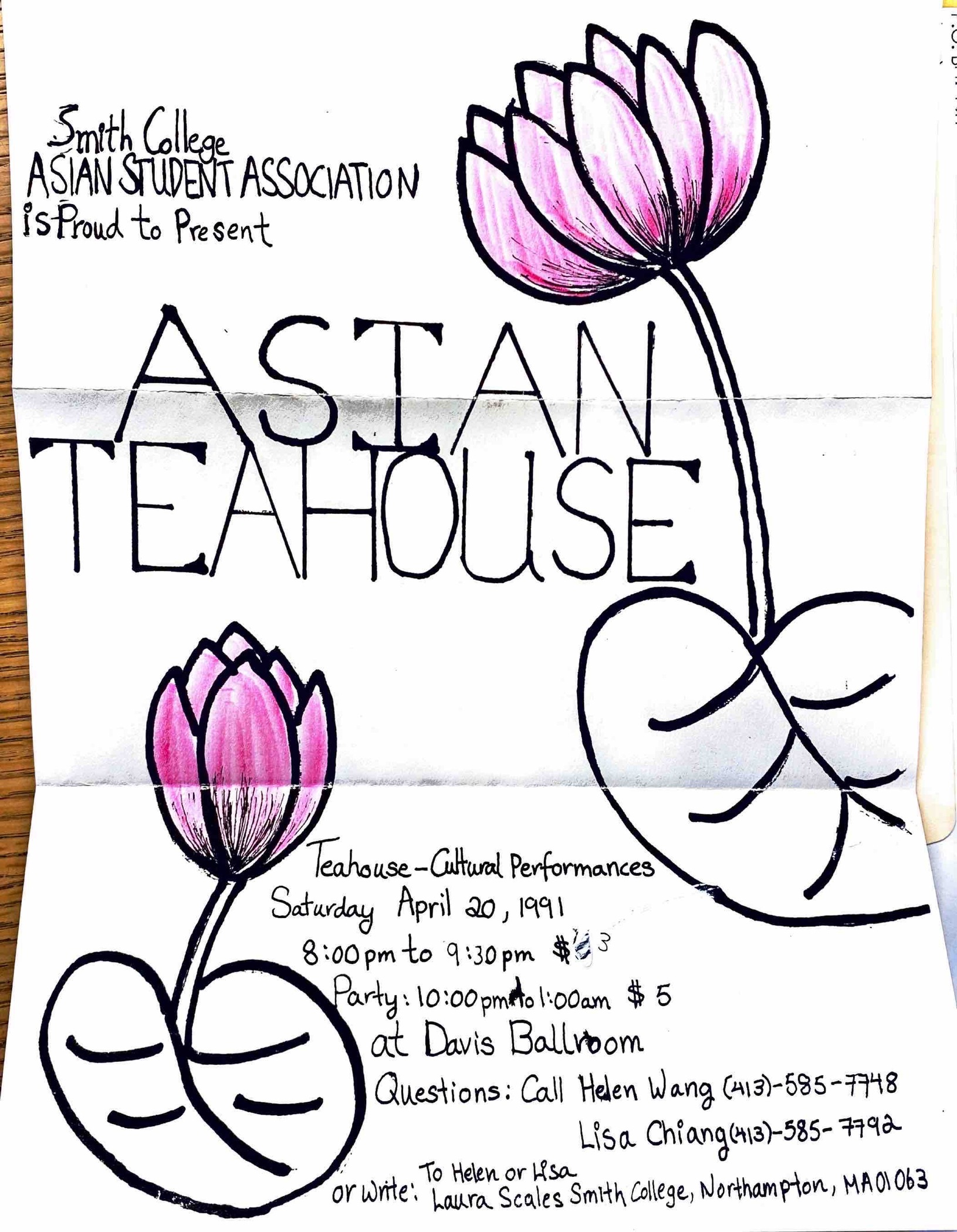Student-led Initiatives
There were many student-led initiatives in the late '90s and '00s, encompassing a range of opportunities and activities for Asian and Asian American students. We have categorized these initiatives into three groups:
- Physical spaces
- Wellbeing
- Cross-institutional collaboration
Physical Spaces
The most successful initiative for creating a physical space at Dartmouth specifically for Asian students was the Pan-Asian Community Resource Room (PAC Room). It was proposed starting in 2006 with the general aim of providing a space exclusively for Asian identities. The room was, therefore, intended to be used for a plethora of events: club meetings, rehearsals, social events, study spaces, and a resource library. With all these uses in mind, students claimed the room would serve over 500 students.
The proposal received overwhelming support from many student organizations, including:
- Dartmouth Asian Organization (DAO)
- Dartmouth Chinese Culture Society (DCCS)
- CDT (Chinese Dance Troupe)
- DJS (Dartmouth Japan Society)
- DTA (Dartmouth Taiwanese Association)
- Far Off Broadway (FOB)
- International Student Association (ISA)
- Korean Street Association (KSA)
- Main Street
- Milan
- Pan-Asian Council (PAC)
- Vandana
- Women of Color Collective (WoCC)
The proposal was eventually accepted and led to the establishment of the PAC Room in Robinson Hall. However, almost 15 years later, with a total square footage of around 250, the room struggles to meet the needs of the increasing number of Asian member of the Dartmouth community.
Counseling
In the late 2000s, there was a growing emphasis on promoting the mental and physical wellbeing of students, including within the Pan-Asian community. The general emphasis on mental health is exemplified through the introduction of Active Minds, a counseling service, on campus in 2008. In their survey asking students about their perspectives on counseling, they took race into account, illustrating a growing awareness of the relationship between race and wellbeing.
The Pan Asian Wellness Initiative
In February 2009, the first Pan Asian Wellness Initiative (PAWI) meeting took place and discussed potential cultural barriers to addressing mental health. These barriers included internal attitudes, external stigma, and the lack of awareness and knowledge. Students and faculty began to underline the impact of cultural factors on notions of mind, body, spirit, and identity.
For instance, there was increased discussion on how a collectivist social identity might affect people's understanding of depression, anxiety, and disordered eating. With this growing awareness of the importance of mental health, the campus began experiencing institutional and cultural changes. In May 2009, the Stall Street Journal published posters educating students on counseling at Dartmouth and on how to manage stress. The Stall Street Journal is a publication by the Student Wellness Center; it is posted in bathroom stalls and consists of termly posters that educate and provide students with resources on wellness-related issues. While this publication was not specific to Asian American students, it illustrates both the growing campus discussion of mental health and the campus-wide presence and influence of Asian organizations at the time.
Student Reflection Series
Soon after, the Student Reflection series, spearheaded by Nora Yasumura, was established. Supported by PAWI, the series was a set of talks and discussions organized to address the stigmatization of mental health and its relation to Asian-specific perspectives. By providing universal questions that included some cultural aspects, Nora attempted to foster discussion around mental health and the acquisition of relevant resources. They explored questions of self-care vs. selfishness, hard work vs. over-work, personal recognition vs. bragging, and more.
Quotes from the reflection series:
"Is taking care of yourself, a selfish act? I used to deeply believe so. In fact, I even thought myself weak for having to take care of myself. It's sort of twisted, but I think having grown up in an Asian family, the feeling of shame for needing to do things for yourself runs heavy."
"Growing up in an environment where caring for others is constantly praised as a virtue, I've always tried my best to be there for all my friends, sometimes even at the expense of my own well-being. "
"I used to base my self-value on external reflections of achievement: grades, compliments and awards... But now I have a new philosophy on this concept: if I worked hard, learned something and got what I needed to out of a course, and then I am satisfied. "
"I am not going to lie; I am pretty "Asian" when it comes to my views on bragging. I internally cringe when people toot their own horns... That said, I think it is crucial that I recognize my personal strengths and accomplishments."
"Being humble is a virtue and a characteristic that's appreciated by many. It has allowed me to learn about other experiences and establish a close relationship with a lot of people more easily. However, in order to survive and do well in American society, we must all learn how to acknowledge our own accomplishments and be able to talk about what we've done. It's a skill set I lacked, which often put me at a disadvantage."
A common theme that emerged from this series was the role of collectivist cultures in practicing self-care and in basing self-value on achievements. By engaging in the discussion of mental health with a specific focus on Asians, the reflection series and PAWI could illuminate how the Asian experience with mental health differed from that of others. Topics such as the Model Minority myth, the need for perfectionism, the shame of showing vulnerability, and the lack of Asian students at Dartmouth were especially relevant.
Cross-Institutional Collaboration
An important element of community building is outreach and collaboration. Through our archival research, we found evidence that there was significant cross-institutional communication and collaboration for Asians and Asian Americans. The evidence ranges from invitations to annual conferences to sports tournaments and cultural events. While we were unable to find much substantive information about these events, such as who they were specifically addressed to and if those recipients attended, we thought it important to include them nonetheless.
East Coast Asian Student Union (ECASU)
The East Coast Asian Student Union was an inter-collegiate student organization with the purpose of empowering students interested in Asian American and Pacific Islander issues and to building coalitions betweenAsians, Pacific Islanders, and all people of color. The organization also aims to strengthen Asian and Asian Pacific American student organizations so that they may better serve the needs of Asian and Asian American students. The union changed its name to the East Coast Asian American Student Union (ECAASU) in 2005.
At the conferences, there were workshops focused on different Asian identities. Participants were provided with a chartered bus, if needed, and urged to bring sleeping bags. Archival records indicate that Dartmouth received invitations in 1983, 1986, 1988, 1997, 1998, and 2015. Notably, in 1997, a Dartmouth student attempted to start a Dartmouth chapter of ECASU. Though there is no evidence of this ever materializing.
Other Conferences and Events
We found minimal details regarding the other correspondences and invitations addressed to Dartmouth that we found in the Rauner archives. We decided it might be useful, however, to list them below in order to demonstrate that there was a history of cross-institutional collaboration and an awareness and cultivation of the Pan-Asian community.
Here is a list of other events/invitations:
1983
- Dec. 9 - "An Evening of Asian Culture: with an Asian Food Festival, and a performance of the play, "ABC"."
- Presented by the undergraduate Asian Student Organizations of Harvard
- Sponsored by the Harvard Foundation and the Undergraduate Council
- Included the evening's menu with the dishes that different student organizations were providing
- Included a review of the ABC Play in the San Fransisco Chronicle
1986
- undated - a thank you note from the Chinese American Civic Association
1987
- Feb. 21 - "Annual Winter Gala"
- Presented by the Korean Student Association of Wellesley College
- Feb. 28 - "An Affair to Remember"
- A semi-formal event and/or dance
- Presented by the Asian Students Association of Smith College
- March 5-19 - "Asian Women In Two Worlds"
- A three week program of cultural events, panel discussions, and presentations
- Presented by the Massachusetts Institute of Technology
- Events included:
- Lecture- "Families, Sexuality, and Reproductive Rights"
- Theatrical monologue- "Coming Into Passion: Song for a Sansei"
- Multi-media performance- "Rainy House Night: A Work in Progress"
- Lecture- "The Public Sphere: Work, Power, and Politics"
- Film screening- "Chinese Women: The Unfinished Revolution"
- Lecture- "Literature, Film, and the Media"
- Film screening- "The Sexual Economy- Exploitation at Work"
- Lecture- "Exploitation, War, and Resistance"
- Musical performance- "The Frank Chickens"
- Workshop- "Asian American Issues: Community and Campus Perspectives"
- April 24 - "10th Anniversary Celebration Dance"
- Sponsored by the Harvard/Radcliffe Asian American Association
- Hosted at Harvard University
- Oct. 3 - "A Little Bit of Seoul"
- Presented by the Korean Students Association of Wellesely College
- Nov. 6 - "Blind Date Party"
- Presented by the Wellesley College Asian Association
- Nov. 14 - The Sixteenth New England Invitational Korean Intercollegiate Volleyball Tournament
- Presented by the Korean Students of Smith College
- Included a party afterwards
1988
- Feb. 12 - "A Valentine's Fling"
- Presented by the Asian Association and Korean Students Association of Wellesley College
- The donations were to benefit the 1988 ECASU Conference
- April 8-10 - the 2nd annual Korean-Americans Student Conference (KASCON II)
- Hosted at Princeton University
- Dartmouth attended for the first time
- Titled "Our Future is Today"
- Event included six seminars, an Asian-American play, art exhibit, recitals, banquet, and a dance party
1990
- Nov. 3 - "Asian Food Festival (and party!)"
- Presented by the Asian Students Association of Mount Holyoke College
- Included dinner, entertainment, and a party
1991
- April 20 - "Asian Teahouse"
- Presented by the Asian Student Association of Smith College
- Included teahouse-cultural performances and a party afterwards
1992
- March 30 - "Celebrating Asian American Teaching, Research, and Service"
- A fundraising event
- Presented by a faculty club
- Hosted at the University of Massachusetts at Boston
- Featured Mr. Sichan Siv, the Asian community liaison for President Bush
- Oct. 17 - "Fall Break Party"
- Presented by Asian Students In America (ASIA) of Syracuse University
- Addressed to Dartmouth's Asian Students Association
Undated
- Conference on Japanese internment
- Hosted by the Asian Student Union of SUNY-Binghamton
- The Intercollegiate Taiwanese American Students Association (ITASA)
- The Vermont Law School's Asian Pacific American Law Students Association (APALSA)
- A letter from University of Massachusetts, Amherst
By looking at who hosted these events and when, we find clear patterns. Most of these events occurred in the late '80s and early '90s and were organized by the Asian student organizations of other, nearby colleges. While these patterns could represent an increasing emphasis on Pan-Asian identities in academic institutions, they could also reflect a period when student organizations at Dartmouth were particularly invested in cross-institutional communication. Conversely, these patterns could suggest only that students and faculty were doing a very purposeful job of saving and archiving communication from other institutions. Therefore, we wanted to acknowledge that we cannot make concrete conclusions from these findings.

